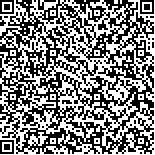本文已被:浏览 28次 下载 15次
投稿时间:2024-01-29 网络发布日期:2025-03-20
投稿时间:2024-01-29 网络发布日期:2025-03-20
中文摘要: 目的 观察脑电双频指数(BIS)与传统镇静评分[Richmond躁动镇静量表(RASS)评分]在重症破伤风患者镇静中的相关性,探讨BIS对重症破伤风患者镇静深度评估的可行性。方法 采用前瞻性研究,收集2023年1月至12月吉林省人民医院重症医学科收治的40例重症破伤风患者,以瑞芬太尼持续静脉泵入镇痛、咪达唑仑联合丙泊酚持续静脉泵入镇静治疗,在病程四个治疗阶段[第一阶段(早期,0~1周)、第二阶段(抽搐加重期,1~2周),第三阶段(平台期,2~3周)、第四阶段(恢复期,3~4周)]各选择一个时间点记录RASS评分及BIS数值,分析四个治疗阶段BIS与RASS评分变化及相关性。结果 第一、第二、第三、第四阶段BIS值分别为84.39±8.45、63.35±8.33、59.78±7.06、91.15±5.41,RASS评分分别为0(-0.47,0.32)、-2(-2.56,-2.04)、-3(-3.65,-3.25)、0(0.06,0.49)。在第一至第三阶段,随着破伤风患者抽搐加重,镇静药物用量增加,BIS值及RASS评分呈下降趋势,而在第四阶段恢复期,患者抽搐减轻,镇静药物减量,BIS值及RASS评分明显上升。四个阶段的BIS值、RASS评分比较差异有统计学意义(P<0.05)。第一、第二、第三、第四阶段BIS值与RASS评分均呈正相关(r=0.648、0.784、0.504、0.413, P<0.01)。结论 BIS与RASS评分在重症破伤风患者四个治疗阶段的镇静深度评估中均具有良好相关性。BIS操作简单方便,避免反复刺激、减少主观因素干扰,可作为判断重症破伤风患者镇静深度的客观指标。
中文关键词: 脑电双频指数 Richmond躁动镇静量表评分 破伤风 镇静
Abstract:Objective To investigate the correlation between bispectral index (BIS) and traditional sedation score using the Richmond agitation-sedation scale (RASS) in monitoring the depth of sedation for patients with severe tetanus , and to explore the feasibility of BIS in monitoring the depth of sedation for patients with severe tetanus.Methods A prospective study was conducted to collect 40 patients with severe tetanus admitted to the Department of Critical Care Medicine of Jilin Province Peoples Hospital from January to December 2023. Remifentanil was continuously pumped intravenously for analgesia, and midazolam combined with propofol was continuously pumped intravenously for sedation. RASS score and BIS value were recorded at one time point in each of the four treatment stages of disease coure[the first (early stage, week 0-1), the second (convulsion exacerbation stage, week 1-2 ), the third (plateau stage, week 2-3) and the fourth(recovery stage, week 3-4)]. The changes of BIS and RASS score in the four treatment stages and their correlation were analyzed. Results In the first, second, third, and fourth stages, the BIS values were 84.398.45, 63.35±8.33, 59.78±7.06, and 91.15±5.41, respectively, and the RASS scores were 0 (-0.47, 0.32), -2 (-2.56, -2.04), -3 (-3.65, -3.25), and 0 (0.06, 0.49), respectively. From the first to the third stage, as the tetanic convulsions worsened and the dosage of sedatives increased, both BIS values and RASS scores showed a downward trend. Conversely, in the fourth stage, the recovery phase, as convulsions lessened and the dosage of sedatives reduced, both BIS values and RASS scores significantly increased. There was a statistically significant difference in BIS values and RASS scores among the four stages (P<0.05). BIS values and RASS scores were positively correlated in the first, second, third and fourth stages (r=0.648,0.784,0.504,0.413, P<0.01).Conclusion Both BIS and RASS scores show good correlation in assessing the depth of sedation in patients with severe tetanus across the four stages of treatment. BIS is simple and convenient to operate, can avoid repeated stimulation, reduce interference from subjective factors, and may serve as an objective indicator for assessing the depth of sedation in patients with severe tetanus.
文章编号: 中图分类号:R517.3 文献标志码:A
基金项目:吉林省卫生健康委科技项目(2023LC055)
附件
引用文本:
董春丽,张靓靓,宋海涛,王永杰.脑电双频指数对重症破伤风患者镇静监测的临床研究[J].中国临床研究,2025,38(3):404-407.
董春丽,张靓靓,宋海涛,王永杰.脑电双频指数对重症破伤风患者镇静监测的临床研究[J].中国临床研究,2025,38(3):404-407.
